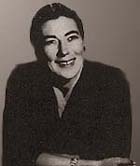September 18, 2008
Proposition 8: Words Matter
In previous posts, I’ve discussed research showing that some survey respondents are more reluctant to forbid or ban something than to simply “not allow” it. And I’ve discussed how this pattern might be relevant to Proposition 8, the California ballot initiative that would amend the state constitution to bar same-sex couples from marrying.
Briefly stated, past studies suggest that at least some voters might be influenced by how the ballot measure is worded — somewhat less likely to support a proposition framed as banning marriage equality, somewhat more likely to support one that is framed as simply defining marriage as the union of a man and a woman.
Opponents of marriage equality apparently understand the importance of wording, and they’ve gone to court about it.
Originally, the official ballot summary was set to use language developed by Proposition 8 backers, which titled it “Limit On Marriage” and characterized it as amending the California Constitution “to provide that only marriage between a man and a woman is valid or recognized in California.”
After the Supreme Court’s historic May ruling on marriage equality, however, Attorney General Jerry Brown changed the title to “Eliminates the Right of Same-Sex Couples to Marry.”
Proposition 8 supporters challenged Brown’s revised wording, but last month a California Superior Court judge gave the go-ahead for it to appear on the ballot.
The New Field Poll
Now an experiment embedded in a new Field Poll has shown that the wording does have an impact, mainly on voters who aren’t already knowledgeable about Proposition 8.
The latest poll was conducted with a statewide sample of 830 likely voters drawn from the voter registration rolls. Roughly half of the respondents — selected at random — were read the official ballot description of Proposition 8:
Proposition 8 is the initiative to Eliminate the Right of Same-Sex Couples to Marry constitutional amendment. It changes the California Constitution to eliminate the right of same-sex couples to marry and provides that only marriage between a man and a woman is valid or recognized in California. Fiscal impact: Potential revenue loss, mainly to sales taxes, totaling several tens of millions of dollars to state and local government over the next few years. If the election were being held today, would you vote YES or NO on Proposition 8?
The other half were read the original description:
“Proposition 8 is the Limit on Marriage constitutional amendment. It amends the California constitution to provide that only marriage between a man and a woman is valid or recognized in California. Fiscal impact: Potential revenue loss mainly to sales taxes, totaling several tens of millions of dollars to state and local government over the next few years. If the election were being held today, would you vote YES or NO on Proposition 8?”
In the sample as a whole, the different ways of framing the amendment showed only a minor impact — 55% opposed Proposition 8 when it was framed as eliminating marriage rights, compared to 52% who opposed it when it was framed as merely placing a limit on marriage. Regardless of the wording, 38% of likely voters said they would support Proposition 8.
This overall pattern, however, masks the wording’s big impact on a particular group — the 30% of likely voters who reported they hadn’t previously heard about Proposition 8. Only a plurality of these respondents opposed the measure when it was described as a limit on marriage — 42% versus 37% who supported it. But when the ballot measure was framed as eliminating marriage rights for same-sex couples, a whopping 58% opposed it while only 30% supported it.
The different versions also affected the level of uncertainty among those who otherwise weren’t aware of Prop. 8. In this group, 21% of those who were read the “limit on marriage” description said they were undecided, compared to only 12% of those who were read the actual ballot version.
Increased Opposition Among Key Groups
The new survey also reveals increased opposition to Prop. 8 among some key demographic groups, compared to the mid-July poll. Opposition has increased among Democrats from 63% to 75%, and among men from 49% to 54%.
Notably, despite Proposition 8’s endorsement by California’s Catholic bishops, the latest poll finds that Catholic voters are substantially more likely to oppose it than in the past (55% oppose it now, compared to 45% in July).
And even in the state’s inland counties, support for Prop. 8 has shrunk considerably. In July, inland voters favored it by a margin of 54% to 40%. Now it’s a statistical dead heat: 48% oppose it, 44% support it.
Turnout Matters
Despite the good news for marriage equality supporters, the latest poll data shouldn’t lead them to be complacent. California voters oppose Proposition 8 now, but what will count is the actual vote on November 4. The amendment can still pass if its supporters turn out their voters in disproportionate numbers.
Thus, the success of each side’s get-out-the-vote effort could be the key to whether or not marriage equality survives in California.
*Â Â Â Â Â Â Â Â Â *Â Â Â Â Â Â Â Â Â *Â Â Â Â Â Â Â Â Â *Â Â Â Â Â Â Â Â Â *
The report on the latest Field Poll is available on their website.

 In the course of her remarkable life, Dr. Hooker surmounted many of the barriers faced by women who sought an academic career in the 20th century. She is best known for her psychological research in the 1950s and 1960s with gay men.
In the course of her remarkable life, Dr. Hooker surmounted many of the barriers faced by women who sought an academic career in the 20th century. She is best known for her psychological research in the 1950s and 1960s with gay men.